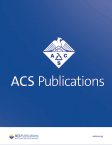Abstract PO4-23-07: Impact of distance between tumor and nipple on locoregional recurrence in breast cancer
IF 3.4
Q2 PUBLIC, ENVIRONMENTAL & OCCUPATIONAL HEALTH
引用次数: 0
Abstract
Introduction: Mastectomy is usually recommended for centrally located tumors due to the risk of nipple invasion. While it is well known that there is no significant difference in survival outcomes according to tumor location, central tumors have a higher likelihood of main lactiferous duct invasion, which can result in the migration of tumor cells to the periphery. Therefore, we conducted an investigation specifically focusing on locoregional recurrence (LRR) rates based on the tumor-to-nipple distance (TND). Method: We retrospectively collected the data of patients who underwent breast cancer surgery between 2004-2018 from two institutions. Patients who underwent neoadjuvant chemotherapy were excluded. TND information was obtained from preoperative MRI records. Results: A total of 9,014 patients were included in the study, and the median tumor-to-nipple distance (TND) was 3.4 (0.0-15.0) cm. For all patients, the restricted cubic spline curve analysis showed that the hazard risk of LRR increased with shorter TND. The pattern was more pronounced in the breast-conserving surgery (BCS) group, whereas the mastectomy group showed a relatively constant risk regardless of TND. Thus, we conducted survival analysis for 5,455 patients who underwent BCS. We set the cutoff for TND as 2.5cm as it showed the lowest p-value for LRR rate. Compared to those with TND >2.5cm, patients with TND≤2.5cm showed significantly lower LRR (HR,1.83;95%CI,[1.37-2.46],p< 0.001) and distant metastasis(DM) (HR,1.53;95%CI,[1.16-2.02],p=0.002) rates. Overall survival was not different between two groups (p=0.405). Cox-regression analysis revealed that TND still impacts LRR (HR,1.52;95%CI,[1.11-2.09],p=0.010) but not DM. Importantly, TND still remained significant factor affecting LRR when analyzed as continuous variable (HR,1.04; 95%CI,[1.02-1.06],p< 0.001). The prognostic impact of TND was particularly evident in patients with high mammographic density. Discussion: BCS can be performed for centrally located tumors, as it offers considerable oncologic safety compared to mastectomy. However, for patients who have a fear of recurrence and are reluctant to undergo re-operation, mastectomy would be a good choice. Citation Format: Jong-Ho Cheun, Eunhye Kang, Hong-Kyu Kim, Han-Byoel Lee, Hyeong-Gon Moon, Wonshik Han, Ki-Tae Hwang. Impact of distance between tumor and nipple on locoregional recurrence in breast cancer [abstract]. In: Proceedings of the 2023 San Antonio Breast Cancer Symposium; 2023 Dec 5-9; San Antonio, TX. Philadelphia (PA): AACR; Cancer Res 2024;84(9 Suppl):Abstract nr PO4-23-07.摘要 PO4-23-07:肿瘤与乳头之间的距离对乳腺癌局部复发的影响
导言由于乳头受侵的风险,通常建议对位于中央的肿瘤进行乳房切除术。众所周知,肿瘤位置不同,生存结果也无明显差异,但中心肿瘤更有可能发生主乳腺导管侵犯,从而导致肿瘤细胞向周边迁移。因此,我们根据肿瘤到乳头的距离(TND)对局部区域复发率(LRR)进行了专门调查。研究方法我们回顾性地收集了两家机构在 2004-2018 年间接受乳腺癌手术的患者数据。排除了接受新辅助化疗的患者。TND信息来自术前磁共振成像记录。结果:研究共纳入9014名患者,肿瘤到乳头距离(TND)的中位数为3.4(0.0-15.0)厘米。对所有患者进行的限制性三次样条曲线分析表明,LRR的危险风险随着TND的缩短而增加。这种模式在保乳手术(BCS)组中更为明显,而乳房切除术组则显示出相对稳定的风险,与 TND 无关。因此,我们对 5455 名接受了 BCS 的患者进行了生存分析。我们将 TND 的临界值设定为 2.5 厘米,因为该值显示 LRR 率的 p 值最低。与TND>2.5cm的患者相比,TND≤2.5cm的患者的LRR(HR,1.83;95%CI,[1.37-2.46],p< 0.001)和远处转移(DM)(HR,1.53;95%CI,[1.16-2.02],p=0.002)率明显较低。两组患者的总生存率无差异(P=0.405)。Cox回归分析显示,TND仍然影响LRR(HR,1.52;95%CI,[1.11-2.09],p=0.010),但不影响DM。重要的是,当作为连续变量进行分析时,TND仍是影响LRR的重要因素(HR,1.04; 95%CI,[1.02-1.06],p< 0.001)。TND对预后的影响在高乳腺密度患者中尤为明显。讨论:与乳房切除术相比,BCS能提供相当高的肿瘤安全性,因此可用于治疗位于中心位置的肿瘤。然而,对于害怕复发、不愿再次手术的患者来说,乳房切除术是一个不错的选择。引用格式:Jong-Ho Cheun, Eunhye Kang, Hong-Kyu Kim, Han-Byoel Lee, Hyeong-Gon Moon, Wonshik Han, Ki-Tae Hwang.肿瘤与乳头之间的距离对乳腺癌局部复发的影响[摘要]。In:2023 年圣安东尼奥乳腺癌研讨会论文集;2023 年 12 月 5-9 日;德克萨斯州圣安东尼奥。费城(宾夕法尼亚州):AACR; Cancer Res 2024;84(9 Suppl):Abstract nr PO4-23-07.
本文章由计算机程序翻译,如有差异,请以英文原文为准。
求助全文
约1分钟内获得全文
求助全文
来源期刊

ACS Chemical Health & Safety
PUBLIC, ENVIRONMENTAL & OCCUPATIONAL HEALTH-
CiteScore
3.10
自引率
20.00%
发文量
63
期刊介绍:
The Journal of Chemical Health and Safety focuses on news, information, and ideas relating to issues and advances in chemical health and safety. The Journal of Chemical Health and Safety covers up-to-the minute, in-depth views of safety issues ranging from OSHA and EPA regulations to the safe handling of hazardous waste, from the latest innovations in effective chemical hygiene practices to the courts'' most recent rulings on safety-related lawsuits. The Journal of Chemical Health and Safety presents real-world information that health, safety and environmental professionals and others responsible for the safety of their workplaces can put to use right away, identifying potential and developing safety concerns before they do real harm.
 求助内容:
求助内容: 应助结果提醒方式:
应助结果提醒方式:


